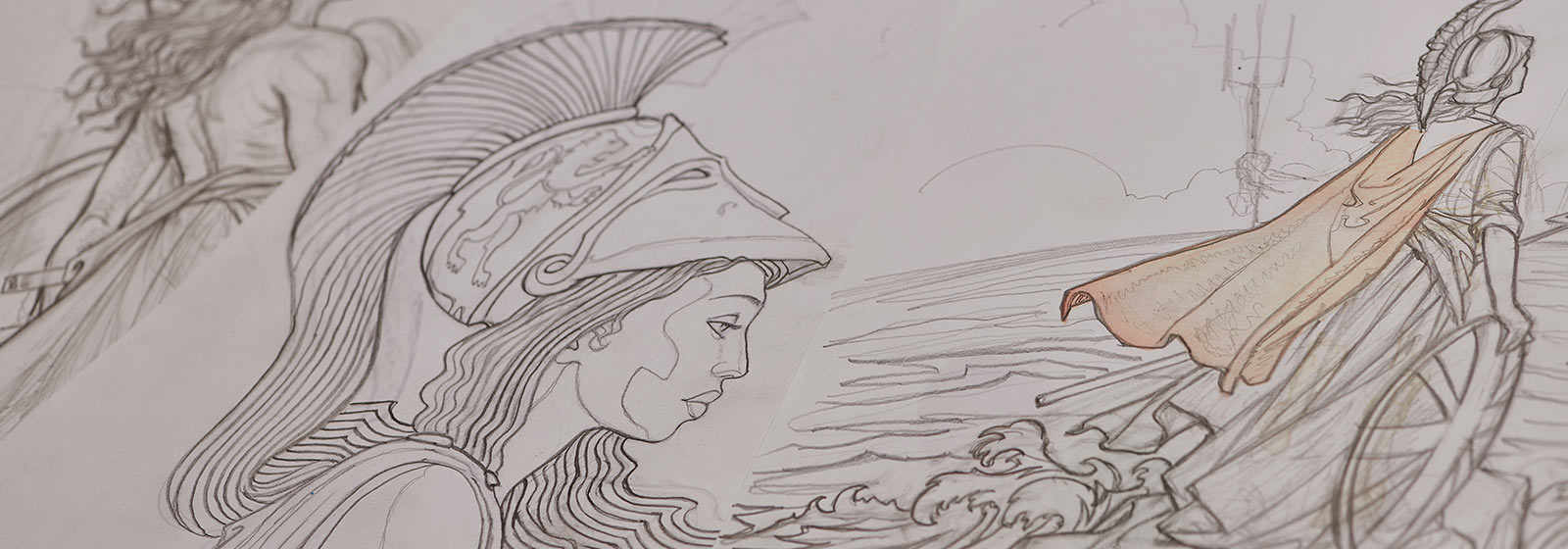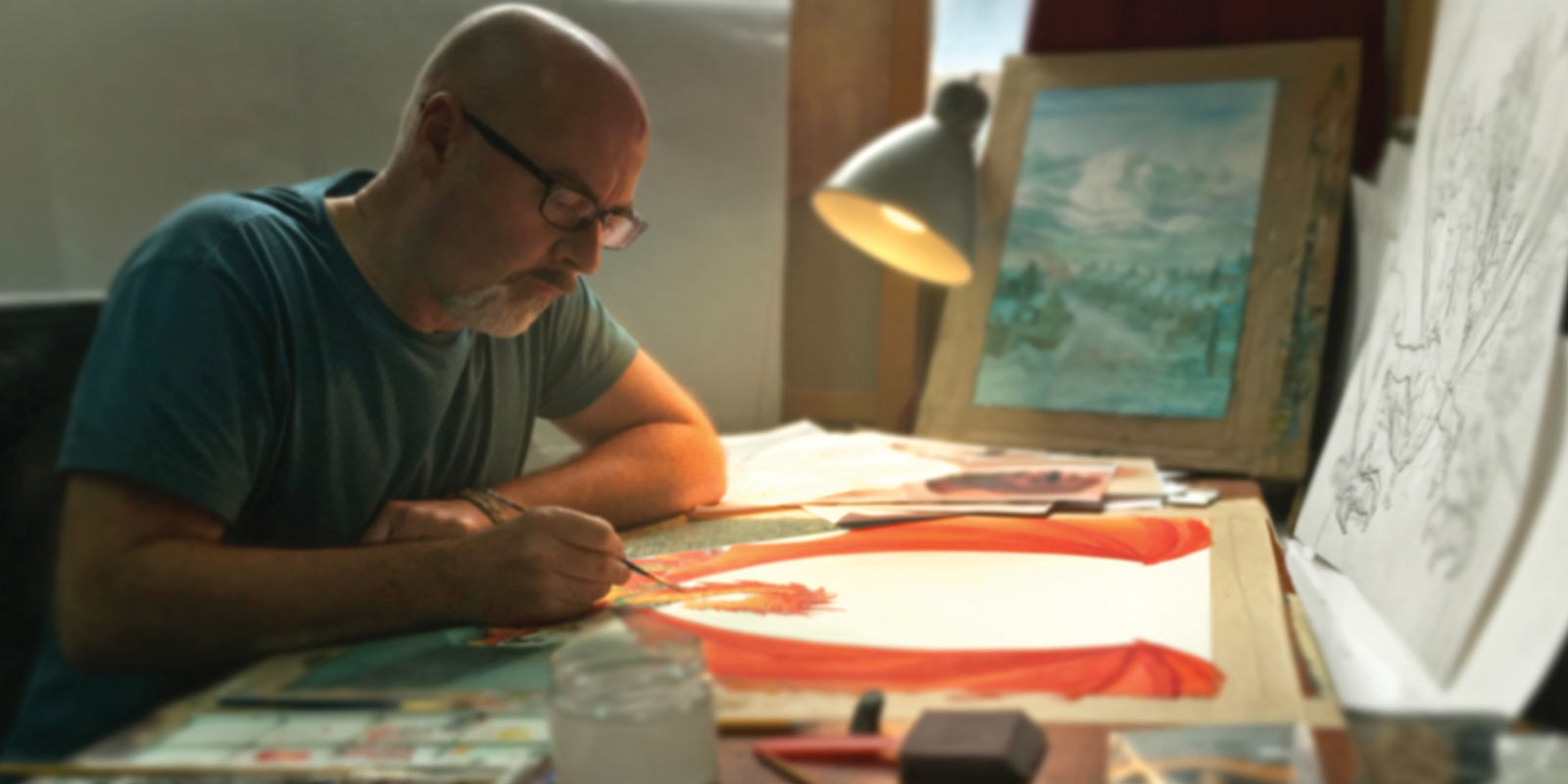For over 2,000 years, the unmistakable image of Britannia has embodied the unwavering spirit of the British nation, inspiring patriotism and motivation simply through her dramatic presentation, emphatic stance and powerful aura.
Britannia has taken many forms since her numismatic debut in c. AD 119 and has been reimagined and redesigned by countless artists throughout the ages. This year, the talented illustrator P. J. Lynch continues this proud lineage with not one but two new Britannia designs befitting this iconic series.

Having made a name for yourself first and foremost as an illustrator, what would you say is the biggest difference between coin design and traditional illustration?
“They are completely different disciplines. With traditional illustration you can use colour and tone to make your picture, whilst in coin design all you have is very low relief sculpture, and it is constrained in a very tight circular shape. It gives the designer a lot of challenges.”
Out of all the coins produced by The Royal Mint, what was it that attracted you to this project in particular?
“The chance to design Britannia for The Royal Mint … are you kidding? It was an honour!”
This is the first year that the range includes two unique, individual designs. How did you approach the initial design concepts for both? “In most projects I work on, one sketch quickly becomes my favourite, but in this case there were several approaches that I liked and which I developed to quite a finished state.
“For the core range, I started with a lot of sketching – lots and lots of thumbnail drawings of Britannia herself in different poses, sometimes with her lion guardian, and sometimes with her trident and shield on a rocky shore with waves splashing at her feet.
“For the exclusive editions in the range, I decided it would be a good idea to go in close for a profile portrait of Britannia. I wanted her to look strong, resolute and attractive, but I also felt that her features should reflect something of the diversity of the people of Britain in the twenty-first century.”
Were there any key features you knew you wanted to include from the outset?
“For me, it was important that Britannia was presented as a strong female figure – not necessarily a beautiful one – and I was looking forward to draping her in some sort of wind-blown classical robes.
“The elements which help to identify the figure as Britannia include the trident, the lion, the Union flag shield, and her Corinthian helmet. Her very distinctive helmet is the most essential of all of these and is a true trademark of this iconic figure.”
What themes did you explore in these designs?
“My main concern was to try to create coins that respected the long tradition of Britannic imagery but whilst looking at it from a modern perspective. I tried not to impose any kind of political narrative on my designs but, with the prospect of Brexit constantly in the news over the last few years, and with the heightened concerns that are developing about issues of identity and race, it would be very hard not to let these themes affect your thinking in whatever field you are working. If you happen to be designing a figure which personifies the spirit of a nation, ignoring this element would be an inaccurate reflection of Britain today.”
You mentioned earlier that coin design presents a lot of challenges. What were the main challenges you found during the design process? “For me the main problem is that I always want to put so much into the image, however, with coin design the process needs to be all about simplification, paring back the image to the most essential elements. It was a pleasure and a privilege to work with The Royal Mint’s brilliant design team, who very patiently guided me through the trickier parts of the process.”
How was the overall experience of designing such an iconic coin? “Being a Belfast-born Irishman, it was a particularly interesting experience to be invited to design Britannia for these new sets of coins. An Irishman reimagining such an important icon of British identity might raise a few eyebrows, but over my lifetime the complicated relationships that exist between the people of Britain and Ireland have changed dramatically and mostly for the better. So I saw it as a very great honour to be entrusted with this work by The Royal Mint.
“I am reminded of the very first coins whose designs connected with me as an artistically inclined little boy. They were the much-loved animal designs that appeared on the first set of coins minted for the Irish Republic in 1927, shortly after independence from Britain, and which were still in circulation up until the 1970s. They were created by a designer named Percy Metcalfe … an Englishman.”




